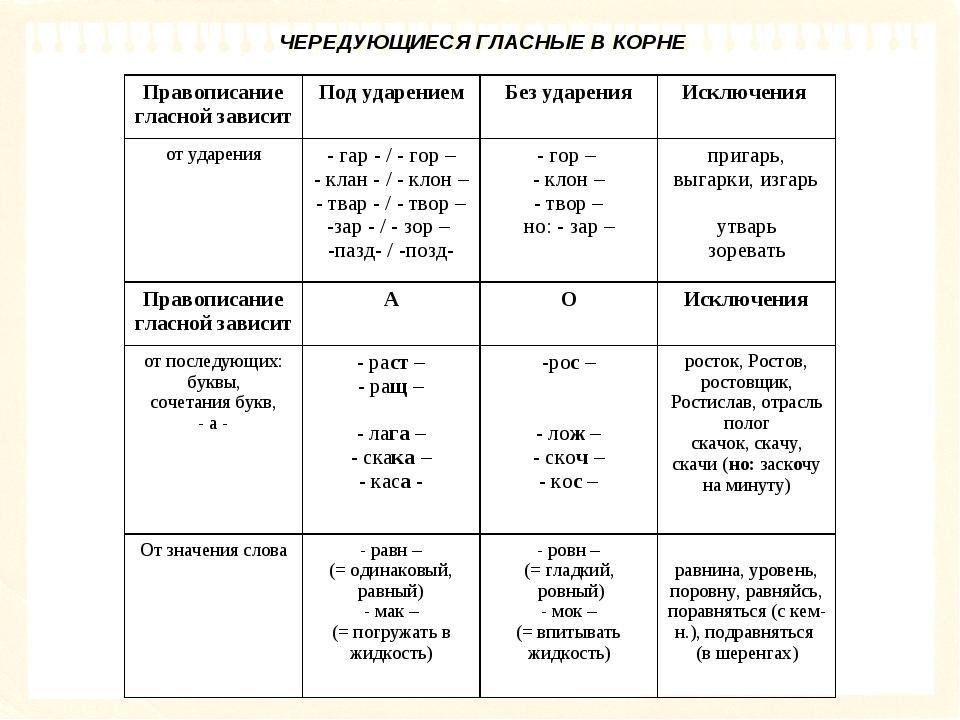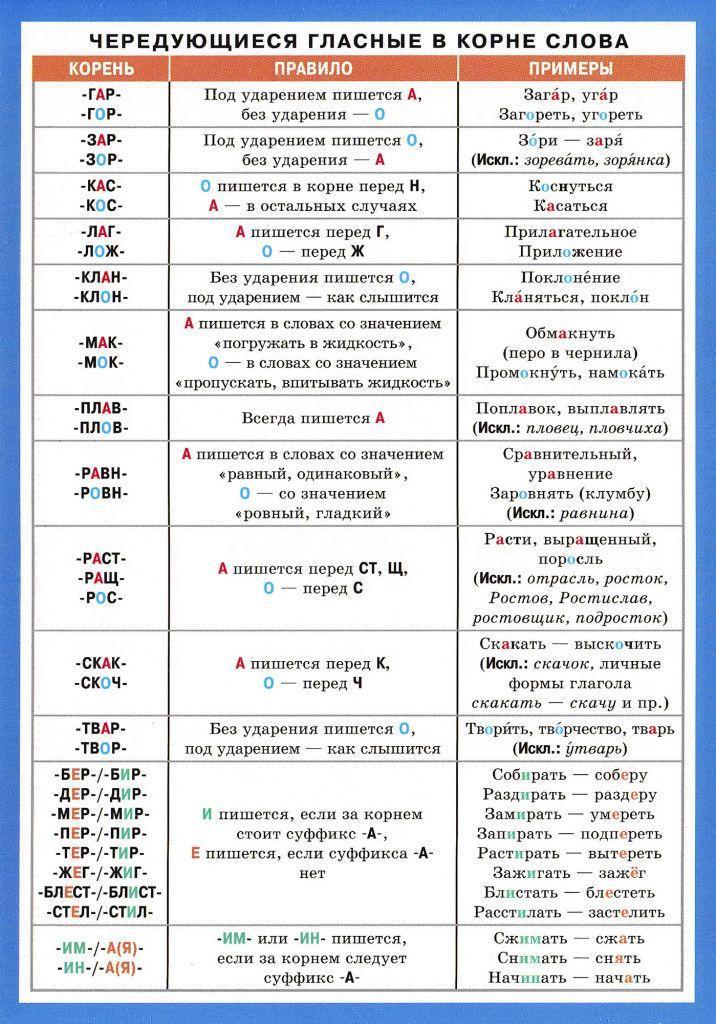Срочно помогите Подготовьте теоретическую памятку на тему «правописание чередующихся гласных в корне слова. Желательный формат- таблица или схема.
Ответы
Ответ:
вот фото, подойдёт?


Ответ:
Объяснение:
В корнях Бир- Бер-, Пир- пер-, Мер--Мир-, Стил- Стел-, Дер-Дир-, и подобных пишется И только тогда, когда за корнем стоит суффикс -А-: собираю- соберу, постилать- постелю В корнях Лаг--Лож- и Кас-Кос- пишется А, если за корнем следует суффикс -А-: полагать- положить, касаться - коснуться В корнях КЛОН- - КЛАН -, ТВОР- - ТВАР-, -ГАР-ГОР- без ударения пишется О: кланяться, поклон, наклонение, творчество, творение, загар, загореть. Исключение: утварь. В корнях ПЛОВ- - ПЛАВ- буква А пишется во всех случаях, кроме слов: Пловец, пловчиха, например: плавник, плавучий. Корень МАК- пишется тогда, когда говорят о погружении чего-нибудь в жидкость (хлеб макать в молоко) , корень МОК_ пишется в словах со значением "пропускать жидкость": сапоги промокают. Корень РАВН- пишется в словах, которые связаны по значению с "равный", "одинаковый": равномерный, сравнивать, а также равнение, равняться, равнина. Корень РОВН- пишется со значением "ровный", "гладкий", "прямой", например: подровнять клумбы. В корнях РАСТ- -РОСТ- гласная А пишется перед СТ и Щ, в остальных случаях пишется О: возраст, росла. Исключение: Отрасль, росток, ростовщик, Ростов, Ростислав. Запомните написание слов с корнем СКАК- (СКАЧ-), СКОК- (СКОЧ-) скакать, вскочить, заскакать, заскочить, скачок, выскочка, подскочить.
Подробнее - на Znanija.com - https://znanija.com/task/24345532#readmore